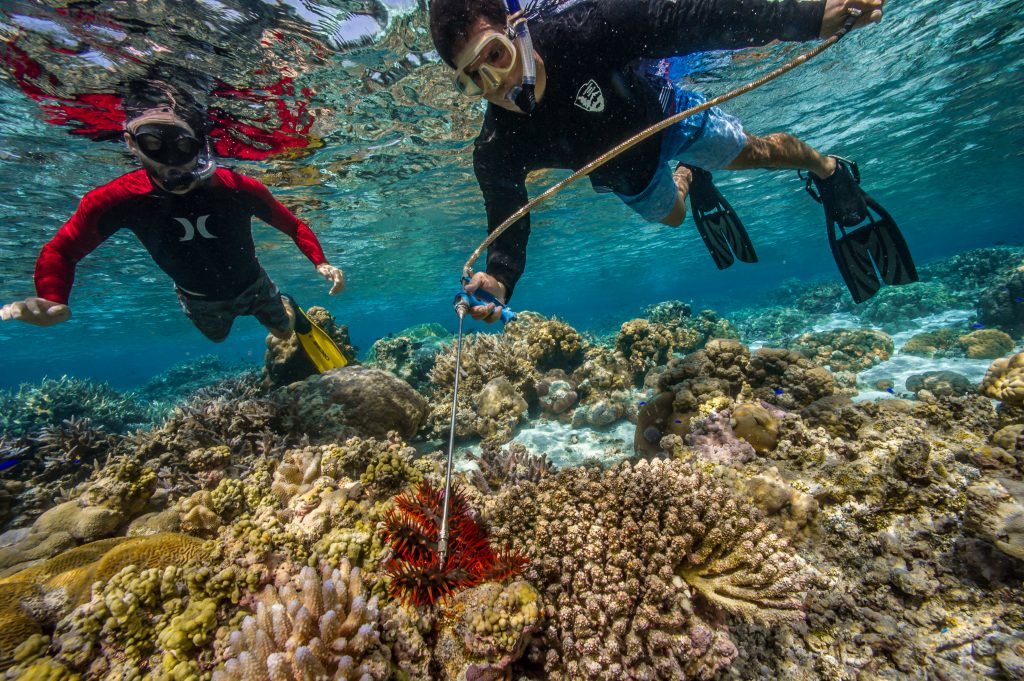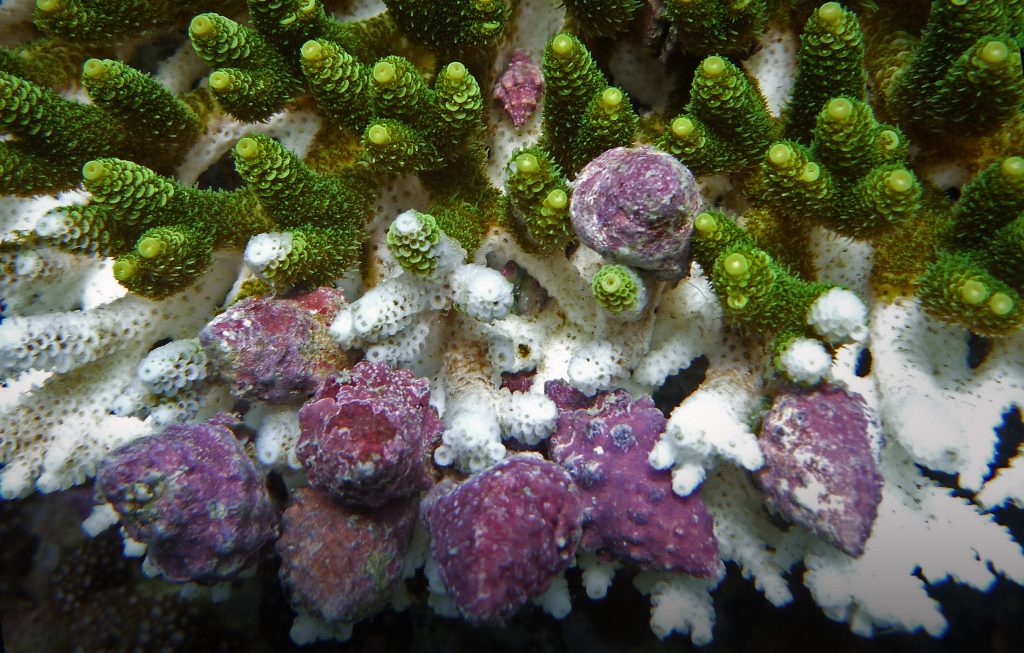Coral Predators
Coral predators are a natural part of a healthy coral reef ecosystem. However, excessive densities of some corallivores, such as crown-of-thorns starfish (COTS) (Acanthaster planci) and coral-eating snails (mainly Drupella spp. and Coralliophila spp.) result in dramatic and widespread declines in coral cover.
A range of techniques is available for removing or preventing the spread of corallivores, but these techniques are generally only feasible for local scale controls. For this reason, control of coral predators is normally only attempted at smaller scales (a few hectares or less), such as around high-value tourism sites.
Crown-of-Thorns Starfish (COTS)
Because excess nutrients are major drivers of COTS outbreaks, ref the most important long-term strategy for reducing the risk of COTS outbreaks is likely to be reducing land-based sources of nutrients through improved watershed management.

Injection of a COTS on snorkel. Photo © Shaun Wolfe/The Ocean Agency
However, the devastating ecological and economic outcomes of COTS outbreaks have motivated managers and the tourism sector to develop culling techniques. Injecting COTS with common household vinegar is now considered the most accessible and efficient method to cull the starfish. ref Mechanical methods for controlling COTS are expensive and labor intensive, thus may only be justified in small reefs that have high socioeconomic or biological significance, such as important spawning sites, tourist areas, or areas with extremely high biodiversity. ref
Corallivorous Snails
Despite their small size, corallivorous snails can cause serious damage to coral reefs when they reach large densities. Control of outbreaks of snails, like Drupella and Coralliophila, has proven challenging, even over small scales, because of the snails’ life history, behavior, and ecological interactions with corals.
Drupella tend to prefer branching corals with complex three-dimensional structures, where they cluster around branch bases. Hiding deep within colonies makes them difficult to detect and access. Some tourism operators on the Great Barrier Reef have had success using long tweezers and flexible claw pickup tools to remove snails one by one. This can be very time-consuming, and it is difficult to be certain that all animals are removed from any one coral colony. Experiences to date from Australia suggest that snail removal can be effective at reducing tissue loss or mortality of target coral colonies ref but is unlikely to be effective as a method for controlling predator populations. In Florida, manual removals of Coralliophila snails is part of the Recovery Plan for elkhorn (Acropora palmata) and staghorn corals (Acropora cervicornis), however proper guidelines for removal are still under development. ref

Drupella snails on a colony of A. millepora in Thailand. Photo © Chad Scott/Conservation Diver
Marine Protected Areas and Coral Predators
Marine protected areas have been shown to mitigate the abundance of coral predators on coral reefs by increasing the protection of predators that feed on and control corallivores. This has been shown for COTS, ref Drupella snails, ref and Coralliophila snails, ref and highlights the role of both reactive (removal) and proactive (marine area protection) management strategies in controlling the threat of overabundant corallivores for coral reefs.
